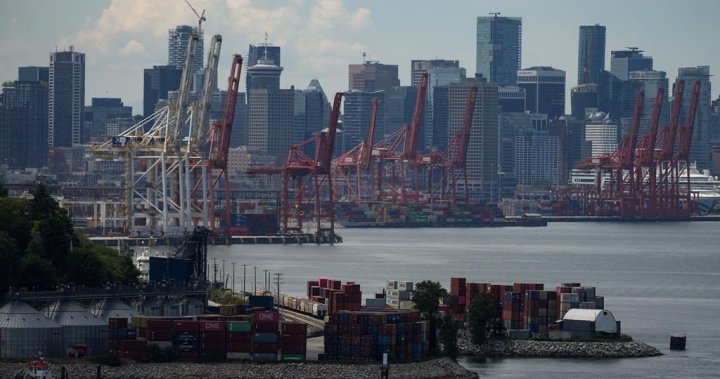Whale rescue teams are preparing for another attempt to disentangle a young right whale in the St. Lawrence Estuary, as part of an operation to save one of the few hundred individuals of their species left in the ocean.
A spokeswoman for Fisheries and Oceans Canada said the department had been working for more than two weeks to disentangle the young animal, which was first spotted on June 22 off the coast of New Brunswick and sighted on Monday off Portneuf-sur-Mer, Quebec.
“Despite the poor weather conditions, several attempts to disentangle the right whale have already taken place and resulted in part of the rope being removed,” said Kathryn Hallett in a statement.
She said Tuesday that the Campobello Whale Rescue Team — a group associated with the Canadian Whale Institute and made up of scientists and former fishermen — is en route to the region and will attempt to intervene in the coming days with the help of several other crews.

“All regional players are mobilized and coordinating to be ready to intervene in the next few days if weather conditions allow,” said Hallett, adding that a satellite beacon has been attached to the remaining ropes to enable researchers to track the animal.
Breaking news from Canada and around the world
sent to your email, as it happens.
The New England Aquarium said the entangled animal is a small female, about a year and a half old, born in 2023. Robert Michaud, scientific director of the Group for Research and Education on Marine Mammals (GREMM), said that when it comes to the North Atlantic right whale, “every animal is very important.”
“Currently, we estimate the population at 360,” he said. “That’s the whole species, all that’s left.”
He said the lack of females of childbearing age, and the fact that those who do give birth are doing so less frequently, is of particular concern.
Michaud said that while entanglements aren’t always fatal, they do have long-term consequences for whales and are particularly dangerous for the youngest, who aren’t as strong as their parents. He added that entangled whales may die earlier and reproduce less often.
“Their physical condition deteriorates as a result of these entanglements, as they have had to expend a lot of energy to get out or simply survive,” he explained.
An estimated 85 per cent of right whales have been entangled in fishing gear at least once. According to Michaud, this includes five of Quebec’s entangled whale siblings.
Untangling a whale can be a dangerous operation, carried out in the open sea with knives and hooks, often in rough weather. A successful attempt, Michaud argued, requires specialized teams familiar with both whale behavior and fishing gear.
He says, however, that the effort is worthwhile, as right whales still have a “real chance” of survival. He added that they are long-lived, fairly resilient and their deaths are largely due to human causes such as entanglements and collisions with boats, making many deaths avoidable.
Michaud said conservation strategies in recent years have included reducing vessel speeds near whales, temporarily closing fishing areas and experimenting with ropeless fishing gear.
“Every whale that survives gives the population a chance to recover,” he said. “So it really is worth being creative and innovative to save these animals, because they can survive.”
© 2024 The Canadian Press





